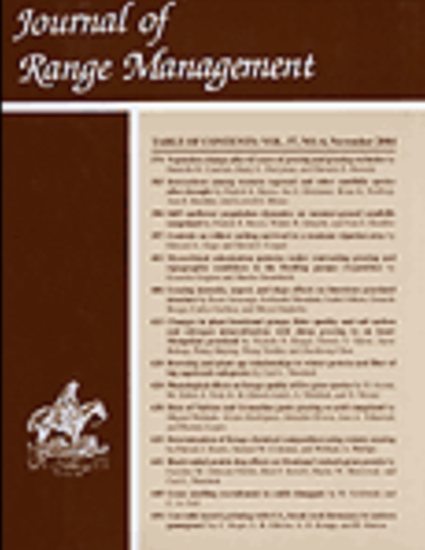
Article
Vegetation Differences in Desert Shrublands of Western Utah's Pine Valley between 1933 and 1989
Journal of Range Management
(1992)
Abstract
Changes in rangeland vegetation integrate the consequences of livestock grazing intensity and possible climate change, as well as other factors. Because vegetation changes tend to be very slow in dry environments, observational time scales that exceed a human generation are needed to separate real trends from year-to-year, weather-driven variability. An exhaustive literature search for valid starting points within the Intermountain region revealed a unique quantitative study that was more than 50 years old. In 1933, vegetation along a 37-km transect in southern Pine Valley, Utah, was read from $19\text{-}{\rm m}^{2}$ plots located every 42 m. The only intentional, local management treatment in the interim has been moderation of domestic livestock grazing pressure. During a period climatically and phenologically similar to the original study, we re-examined representative segments of this transect by a more detailed updating of the original "square-foot-density" method. We found that vegetation type boundaries and ecotones were little changed after 56 years. However, canopy cover was dramatically greater in 1989, in some cases by more than tenfold for several perennial grasses, and less so for shrubs. Substantially greater understory cover as a relative proportion of total plant cover occurred in 1989 in all vegetation types examined. Some of the observed positive shifts of dominance/diversity are contrary to widely accepted expectations in the literature
Disciplines
Publication Date
1992
DOI
DOI: 10.2307/4002574
Citation Information
Neil E. West. "Vegetation Differences in Desert Shrublands of Western Utah's Pine Valley between 1933 and 1989" Journal of Range Management Vol. 45 Iss. 6 (1992) p. 569 - 578 Available at: http://works.bepress.com/neil_west/72/
